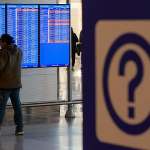Why Saudi Arabia Can Spend More Money Than It Makes, Even as Oil Prices Drop

Despite a decline in oil prices and reduced foreign investment in its ambitious projects, Saudi Arabia appears unfazed. The kingdom is navigating its financial landscape with confidence, thanks in part to its unique economic position.
To get job news and latest updates of KSA, join us on WhatsApp.
Economic Context
Dependency on Oil Revenue
Saudi Arabia’s economy is still significantly reliant on oil, which accounts for approximately 61% of its revenue as per the 2025 budget. However, the kingdom is actively seeking to diversify its economy away from energy dependence, exemplified by mega-projects like Neom.
Break-Even Oil Price
Analysts often refer to the “break-even oil point,” the oil price necessary for Saudi Arabia to avoid a budget deficit. Currently, it is estimated that the kingdom needs oil prices to exceed $100 per barrel to balance its budget when considering spending from the Public Investment Fund (PIF).
Like our Facebook page to get job vacancies and updates in KSA
Willingness to Run Deficits
Budget Deficits
Saudi Arabia is willing to operate with budget deficits. The 2025 budget anticipates a fiscal deficit of $27 billion (2.3% of GDP). Should oil prices average $65 per barrel, this deficit could rise to $56 billion (5.2% of GDP), which analysts believe is acceptable for the kingdom at this time.
Flexibility in Financial Strategy
Ellen Wald, an energy consultant, notes that Saudi Arabia’s new mindset allows for budget deficits without necessitating a specific oil price. This flexibility is bolstered by a robust credit rating from S&P Global, which upgraded Saudi Arabia to A+, comparable to China and Japan.
Financial Reserves and Debt Strategy
Strong Financial Position
Saudi Arabia holds over $430 billion in foreign reserves and has a debt-to-GDP ratio of 30%, significantly lower than many emerging markets. This financial buffer gives the kingdom the capacity to manage deficits.
Increased Debt Issuance
To address short-term financing needs, Saudi Arabia has become a leading issuer of international debt, surpassing even China in 2024. The kingdom has already issued more than $14 billion in debt this year and may double that by year-end.
Market Confidence
Despite lower oil prices, demand for Saudi debt remains strong. Analysts believe that while lenders may require higher interest rates, the kingdom’s overall fiscal health allows it to manage increased debt levels effectively.
Challenges and Project Adjustments
Scaling Back Ambitious Projects
While Saudi Arabia is positioned to handle deficits, it has had to reassess its mega-projects, like Neom. Originally projected at $1.5 trillion, the project has seen significant cutbacks, with anticipated residents dropping from 1.5 million to 300,000 by 2030.
Market Realities
Analysts note that while Saudi Arabia is in a better position than many emerging markets, it must recognize the limits of its debt capacity. The appetite for investment in Gulf states, especially from Asian markets, is strong, particularly as investors seek alternatives to US debt.
Saudi Arabia’s ability to spend beyond its means, even amid falling oil prices, stems from a combination of strong financial reserves, a willingness to accept budget deficits, and a strategic approach to debt.
As the kingdom continues to diversify its economy, it remains focused on long-term growth while navigating the complexities of global economic shifts.
Join us on Whatsapp and follow us on Facebook to get latest updates you need in KSA.
Read More:
Gulf Trick







